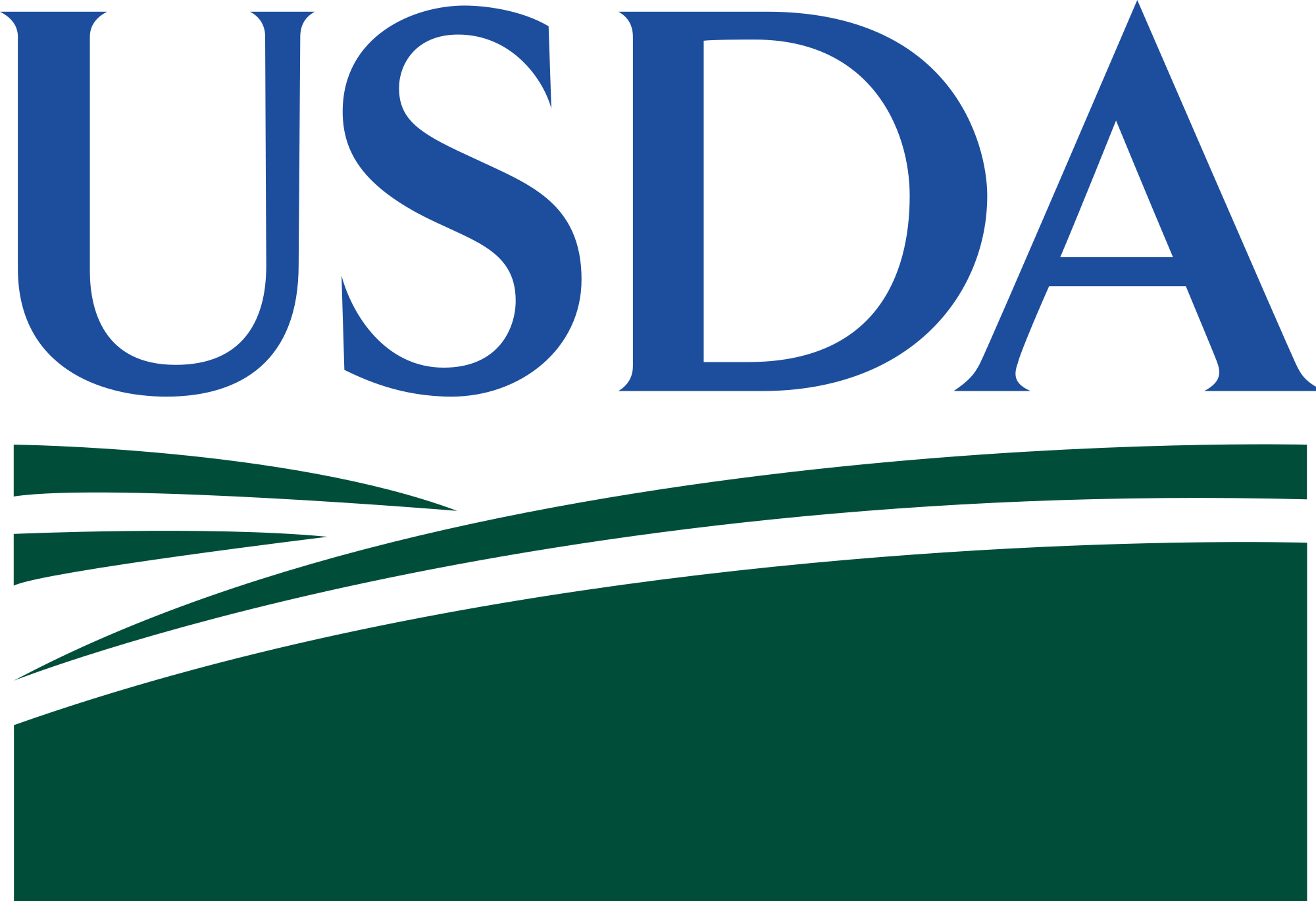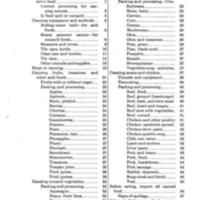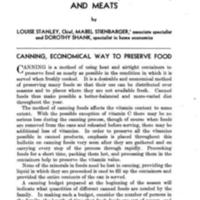Home Canning of Fruits, Vegetables and Meats
Title
Home Canning of Fruits, Vegetables and Meats
Subject
victory gardens
Excerpt
CANNING is a method of using heat and airtight containers to preserve food as nearly as possible in the condition in which it is served when freshly cooked. It is a desirable and economical method of preserving many foods so that their use can be distributed over seasons and to places where they are not available fresh. Canned foods thus make possible a better-balanced and more-varied diet throughout the year.
The method of canning foods affects the vitamin content to some extent. With the possible exception of vitamin C there may be no serious loss during the canning process, though of course when foods are removed from the cans and reheated before serving, there may be additional loss of vitamins. In order to preserve all the vitamins possible in canned products, emphasis is placed throughout this bulletin on canning foods very soon after they are gathered and on carrying every step of the process through rapidly. Precooking foods for a short time, packing them hot, and processing them in the containers help to preserve the vitamin value.
None of the minerals in foods need be lost in canning, providing the liquid in which they are precooked is used to fill up the containers and provided the entire contents of the can is served.
A canning budget prepared at the beginning of the season will indicate what quantities of different canned foods are needed by the family. In making such a budget, consider the number of persons in the family, the length of time that fresh foods are out of season, and what foods are available for canning, as well as the cost of equipment and containers, and the value of the time of the persons doing the work. Assistance in planning a canning budget suitable to the locality and adapted to the nutritional requirements of the family may be obtained from the State college of agriculture.
The method of canning foods affects the vitamin content to some extent. With the possible exception of vitamin C there may be no serious loss during the canning process, though of course when foods are removed from the cans and reheated before serving, there may be additional loss of vitamins. In order to preserve all the vitamins possible in canned products, emphasis is placed throughout this bulletin on canning foods very soon after they are gathered and on carrying every step of the process through rapidly. Precooking foods for a short time, packing them hot, and processing them in the containers help to preserve the vitamin value.
None of the minerals in foods need be lost in canning, providing the liquid in which they are precooked is used to fill up the containers and provided the entire contents of the can is served.
A canning budget prepared at the beginning of the season will indicate what quantities of different canned foods are needed by the family. In making such a budget, consider the number of persons in the family, the length of time that fresh foods are out of season, and what foods are available for canning, as well as the cost of equipment and containers, and the value of the time of the persons doing the work. Assistance in planning a canning budget suitable to the locality and adapted to the nutritional requirements of the family may be obtained from the State college of agriculture.
Creator
Stanley, Louise
Stienbarger, Mabel C..
Shank, Dorothy Esther,
Bureau of Human Nutrition and Home Economics
Date
1942
Relation
Farmers' Bulletin: Number 1762
File(s)
Home Canning of Fruits, Vegetables and Meats 1.jpg
(image/jpeg)
Home Canning of Fruits, Vegetables and Meats 2.jpg
(image/jpeg)
Home Canning of Fruits, Vegetables and Meats 3.jpg
(image/jpeg)
 An official website of the United States government.
An official website of the United States government.




